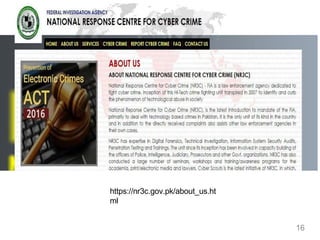The document outlines information security concepts, defining security, privacy, and information security, and highlighting the differences between cybersecurity, network security, and information security. It lists top threats to information security such as social engineering, malware, and poor configuration, alongside preventive strategies for organizations. Additionally, it emphasizes the principles of confidentiality, integrity, and availability in protecting sensitive data.


















![19
Top Cyber security
companies in
Pakistan List 2022 Updated
• Delta Tech, Pakistan’s Cyber Security
Consulting Firm
• Tier3 Cyber Security Services – Pakistan
• Catalyic Security | Cyber Security Solutions |
Cyber Security Company |
catalyicsecurity.com
• Trillium Information Security Systems (TISS)
• PakCERT [Pakistan Computer Emergency
Response Team]
• Dunicot Pvt. Ltd., Cyber Security Services
Company
• Tranchulas
• Cyber Security consultancy Company
• Institute of Cyber Security
• Pakistan Information Security Association](https://image.slidesharecdn.com/lecture01-240519140028-d10caad7/85/Lecture-01-Information-Security-BS-computer-Science-19-320.jpg)


































